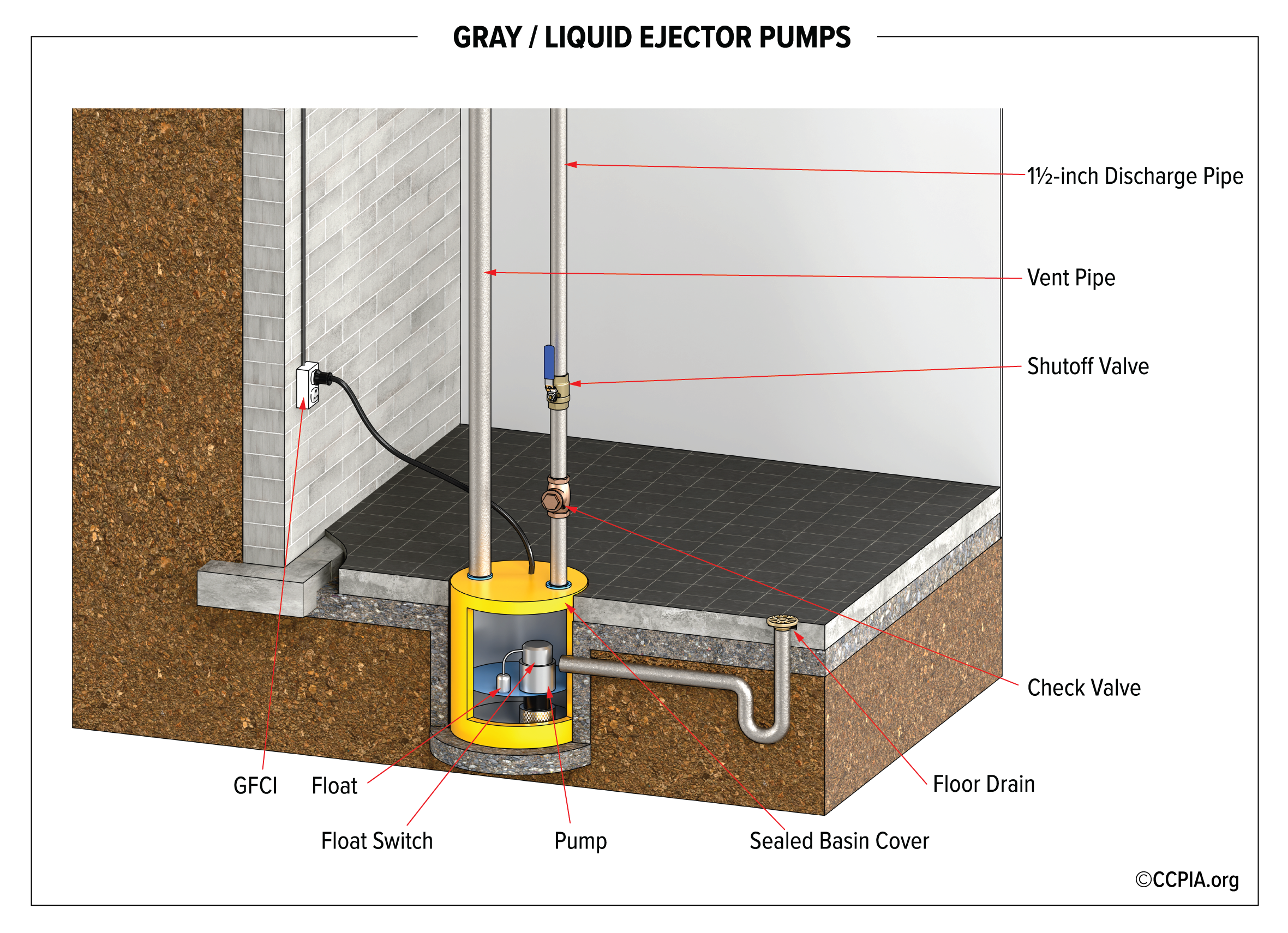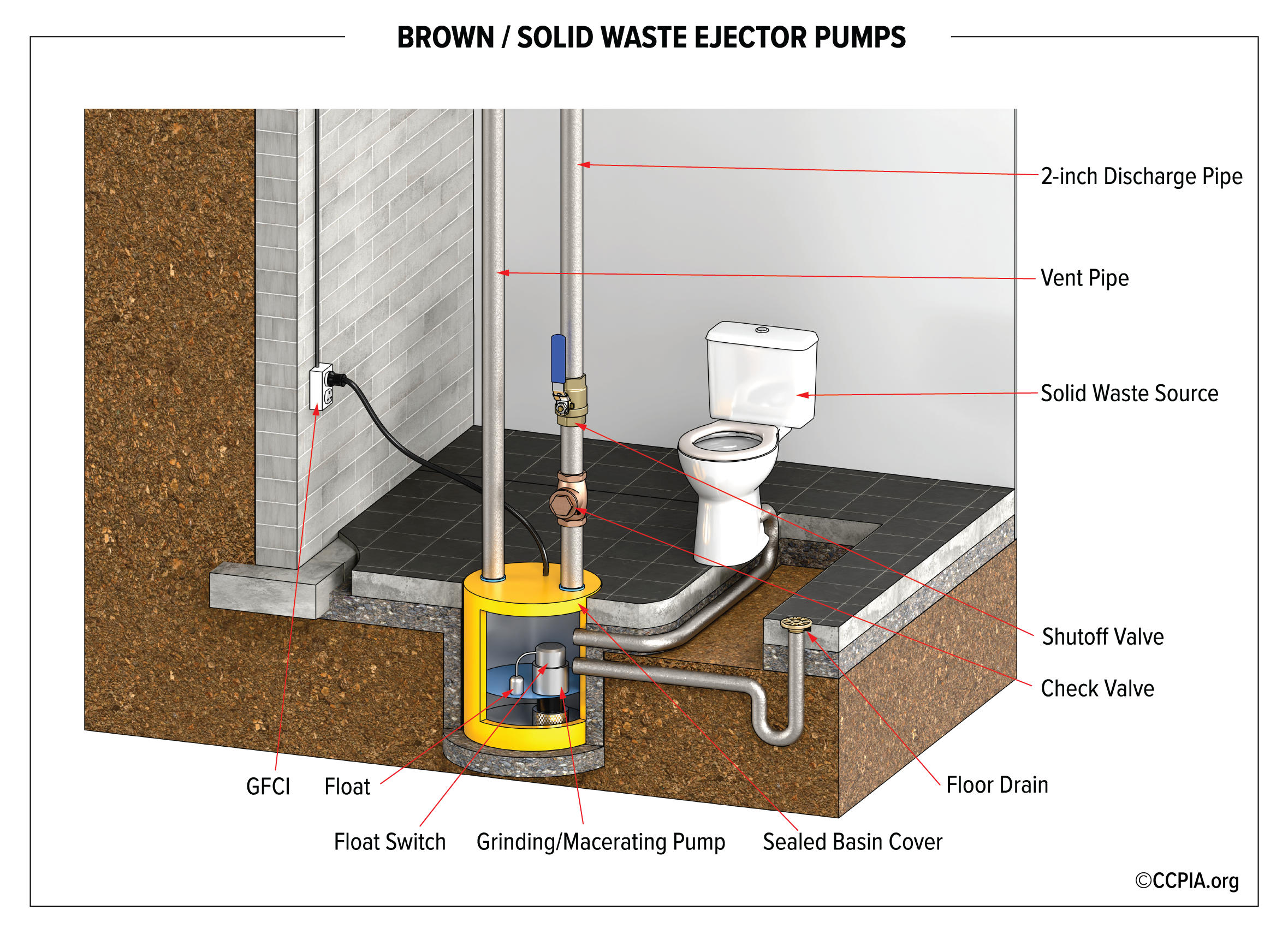Sewage pumps are essential for managing sanitary waste generated at commercial buildings. There are two main systems for removing this waste: overhead and underground. Underground systems exit the building at a point lower than the lowest finished floor level, so they are not visible from a basement, crawlspace, or slab. Overhead building sewers exit at an elevation above the lowest level, so they are visible above the finished floor’s elevation.
Underground System
The most traditional type of sanitary sewer system is the underground system, also called a gravity system. All the sanitary waste from the fixtures and drains in the building is carried under the lowest level of the building and discharged directly into the building sewer. The building sewer then drains directly into the public sewer or septic system.
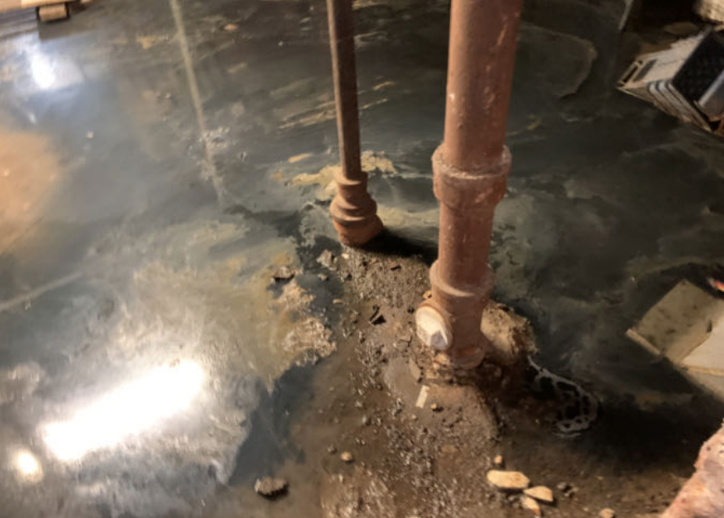
Example of an underground or gravity sewer system draining below the basement floor
Overhead System
The main characteristic of an overhead sewer system is that the building’s sewer exits at a higher elevation than the lowest floor level. In this system, a pump is required to help remove the sanitary waste, as gravity cannot be relied upon.
There are several reasons why overhead sewers are used in buildings. One reason is the elevation of the public sewer. The building sewer needs to flow to the public sewer with the correct slope to allow the sewage waste to flow without causing blockages. It’s been determined that a ¼-inch per foot of fall or pitch is the optimal slope for a sewer pipe. If the building sewer cannot achieve this slope naturally or through gravity, raising the discharge higher in the foundation can help achieve the required slope.
Another reason for having an overhead discharge is to prevent sewage from backing up into the building. If the public sewer becomes blocked, the waste will back up into the building’s sewer, and if the building drain is located on the lowest floor, it can cause significant damage to the building. By lifting the discharge above the finished floor, the fixtures and drains become isolated from the building drain, reducing the likelihood of sewage backup into the building. The pump that is used to lift the waste is called an ejector pump.
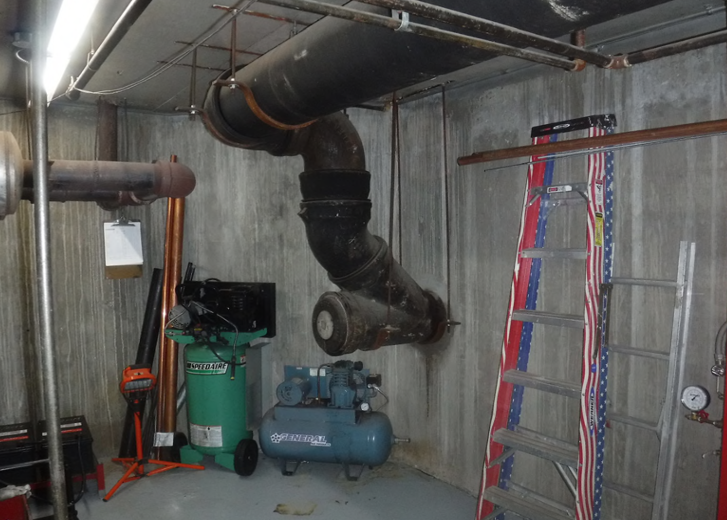
Example of overhead sewer. The discharge of the building drain is higher than the finished floor of the basement.
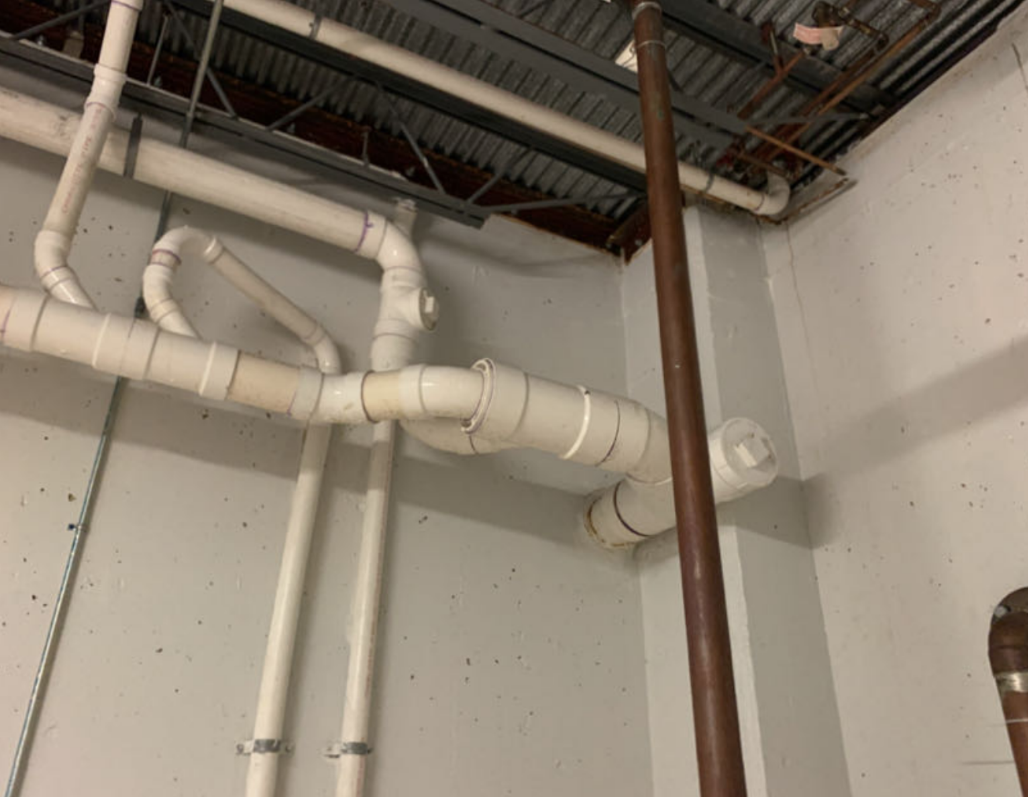
Example of overhead sewer.
Ejector Pumps
When building drains or waste from fixtures are located below the overhead building drain, an ejector pump is used to pick up the waste. The ejector pump is placed at the lowest level of the floor and receives the sewage from the building drain and connected fixtures. It then lifts the sewage to the discharge elevation and sends it out to the building sewer.
In cases where the building drain is positioned overhead with fixtures located below it, only the fixtures and drains located below the building drain need to be pumped up through the ejector system, rather than the entire building’s.
There are two types of ejectors: gray (liquid) or brown (solid). A gray or liquid ejector only pumps or discharges liquid waste, such as that from a sink or a floor drain. A brown or solid ejector needs to be used when there are toilets or restrooms that require an ejector. The difference between the two types of ejectors is the pumps that need to be used.
- Gray/Liquid Ejector Pumps: A gray or liquid pump could be any type of pump suitable for the amount of water that needs to be removed, the height of the pipe that needs to carry the water, and the distance between the ejector system and the building sewer.
- Brown/Solid Waste Ejector Pumps: A solid pump has a grinder or macerator to process the effluent before it is pumped out of the ejector.
Both gray and brown ejector pumps have to be located in a sealed vessel. These vessels or crocks have a seal and secured lid, with plumbing from the ejector pump traveling through the lid to the building sewer, as well as a vent pipe attached to the building stack vent, which is important to have because the ejector is part of the sewage or sanitary system.
How to Identify What Type of Pump Is Present
Inspectors are not required to dismantle or open any ejector lids during an inspection. However, they should visually determine if the pump is suitable for the waste it is discharging. This can be challenging because the grinder or macerator is located under the sealed lid. One way to determine the type of ejector pump is by examining the diameter of the discharge pipe. The most common gray water or liquid pump has a 1½-inch-diameter discharge pipe, while a brown or solid waste ejector has a discharge pipe diameter of 2 inches or greater. Although this is not always true, these are the most common configurations.
Grey/Liquid Ejector Pump
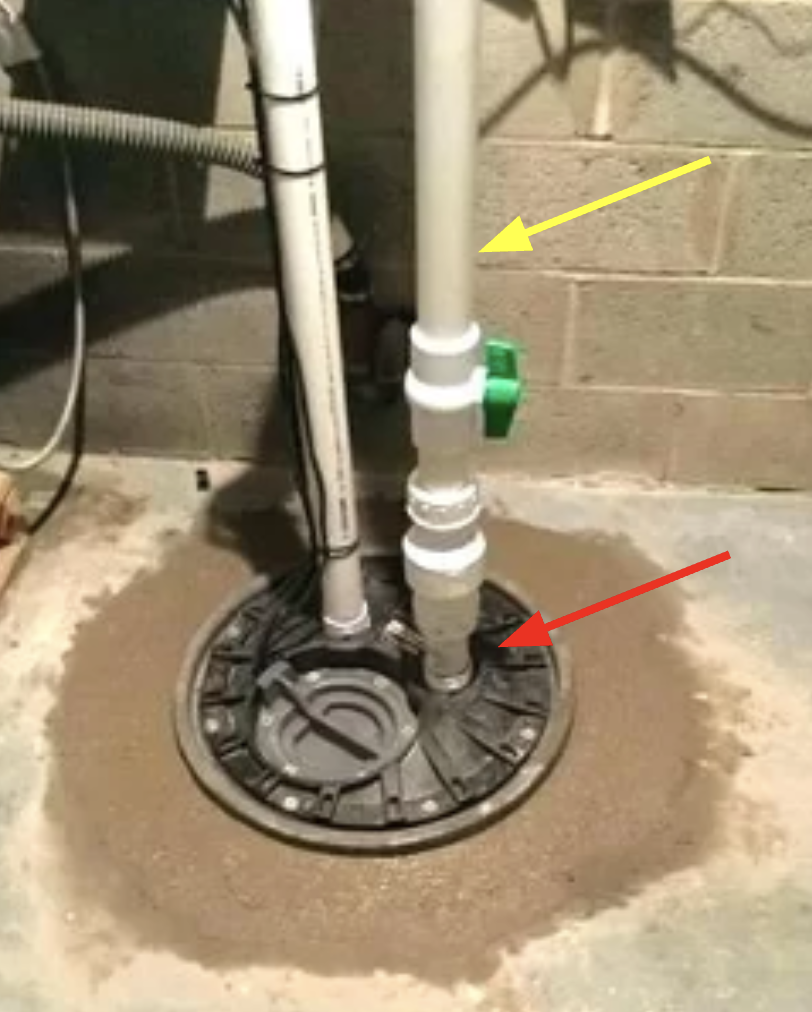
1½-inch-diameter discharge pipe. The red arrow indicates the discharge pipe. The yellow arrow shows the diameter of the pipe above any check or isolation valves.
Brown/Solid Waste Ejector Pump
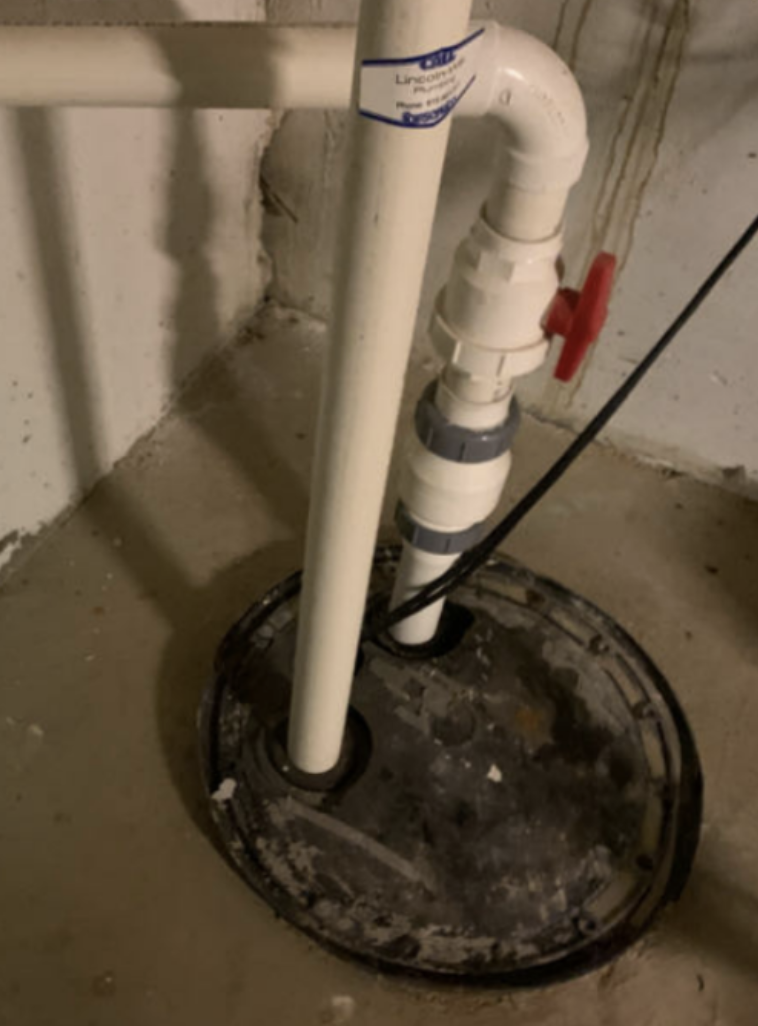
2-inch-diameter discharge pipe
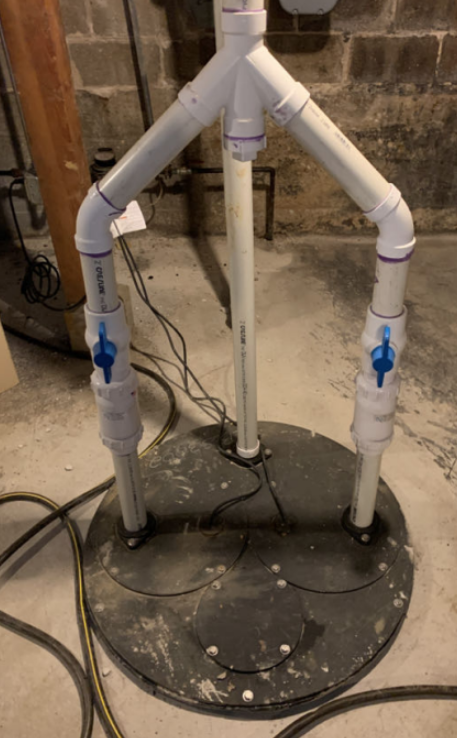
Twin 2-inch-diameter discharge pipe
Important Inspection Tips:
- Identify the type of sewer present (overhead or underground).
- If overhead, locate the ejector pump.
- Verify that the proper type of ejector is present:
- Grey for liquid
- Brown for sanitary or solid waste
- Visually inspect the ejector lid:
- Solid and without openings
- Gasket sealed around pipes and electrical cords
- Verify its operation (operate the fixtures).
To download a sump pump/ejector pump checklist visit, Commercial Property Inspection Checklists and Field Guides.
Conclusion
Inspectors should verify the operation of the ejector pump whenever possible. This does not involve removing the lid, but could include testing the functionality of the fixtures and devices that the ejector serves. After noting the type of ejector, the inspector could flush the toilet, operate the shower or tub, or use any sink in the area. When enough water or waste is put into the ejector, it should operate automatically. A failure to operate should be noted in your inspection report.
In addition to the operational test, inspectors should identify which fixtures are being served by the ejector. If it is a floor drain or basin sink, a gray or liquid system should be present. If it is a toilet, urinal, or any other waste fixture, a brown or solid system should be present. Placing a toilet or any other solid waste fixture in a gray or liquid system will lead to a significant issue whereby the system will not drain properly into the building’s sewer system.
Article Written By: Rob Claus
Additional Resources for Commercial Property Inspectors:



